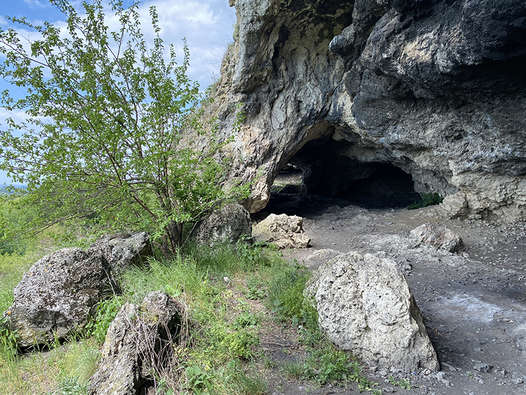The Grotto of Duruitoarea Veche
Description
At the junction of the Ciuhur and Prut rivers, the pulse of life has been beating since the Lower Palaeolithic, when people used tools made of hewn stone. Here is the earliest monument of human history on the territory of the Republic of Moldova - Duruitoarea Veche.
On the outskirts of the village of Duruitoarea Veche, a 3-chamber cave has been discovered in the limestone cliffs and rocks chain, extending 49 m from north to south. The height of the dome does not exceed 8 m and the total surface area reaches 30 sq m.
Here traces of a Palaeolithic settlement have been identified with traces of the existence of various prehistoric human cultures: tools from flint, fossil animal bones, remains of hearths, etc.
The site was discovered in 1958 by archaeologist Nicolae Chetraru. For almost two decades, it has been studied by teams of archaeologists, geologists and palaeontologists. Three authentic levels of Palaeolithic human habitation IV, III and II have been established, including numerous fossil skeletal remains of mammals and birds from Pleistocene and various working and hunting tools made of flint and bone. The lithic archaeological finds and animal remains from the Level IV and III dwellings are attributed to the Lower Palaeolithic, Acheulean epoch, Tayak archaeological culture. Their geological age is estimated at 160-100 thousand years, thus levels IV and III are considered to be the oldest Palaeolithic sites in the Republic of Moldova. The Upper Palaeolithic human hunter site found in level II settlement is attributed to the local Middle Gravetian or Early Epigravetian culture, i.e. approx. 20-18 thousand years BC. Numerous flint, horn and bone tools were collected from the deposits of this level, as well as about 10 thousand skeletal remains, of which 54 species of mammals and 29 species of birds. They also found a lower jawbone with some molars of a Palaeolithic Neanderthal.
Most of the bones are of mammals hunted for food: horse, wild donkey, bison, reindeer, red deer, mammoth, deer, rabbit, woodchuck, etc. Other animals were hunted for their fur: river beaver, woodchuck, badger, wild cat, marten, common fox, polar fox, lynx, etc. Finally, animals that were dangerous for the inhabitants of the resort were also killed: wolf, wild boar, panther, woolly rhinoceros, glutton, cave hyena, etc. At the northern end of the reef, in 2004, the bones of a mammoth were excavated - a rare find in Moldova.


 ro
ro
 ru
ru
